Blue Chips
The 11 courses we predict will make the biggest moves in our next course rankings

Olympic Club's renovated 4th hole.
Evan Schiller
Monday morning quarterbacking exists in every facet of sports, even golf course rankings. Though in the case of rankings, it’s more like decades-later quarterbacking.
Golf-course enthusiasts often look back on long-ago lists of course rankings and ask, “What were they thinking?” A perusal of lists from the 1970s, ‘80s or ‘90s will commonly reveal high-charting courses that now seem unremarkable or have faded into obscurity.
Just as interesting is analyzing the courses that were once neglected.
One of the most peculiar examples in Golf Digest’s America’s 100 Greatest Courses rankings is the omission, until 1985, of National Golf Links of America, currently ranked seventh. When it opened in 1911, NGLA was considered to be the most important course built in the U.S., the first uniquely American example of golf design (even though the holes were based on British inspirations) and an archetype that would be studied by a generation of architects. It appeared in the magazine’s list of America’s 200 Toughest Courses in 1967, then disappeared for nearly two decades.
Studying why NGLA, as well as other courses like Alister MacKenzie’s and Perry Maxwell’s Crystal Downs in Michigan (currently ranked 14th) and Seth Raynor’s Fishers Island (ninth), were absent in the rankings for years can illuminate why certain places rise in the rankings and other fall.
What was going on at National during the 1960s and 1970s that would preclude it from being considered among the 100 best courses in the land? It’s not that the course fell into obscurity or was off the radar of Golf Digest panelists (as was the case with Crystal Downs, in remote northern Michigan, which didn’t debut until 1989). NGLA is located next door to Shinnecock Hills, a course that’s been positioned inside the top 20 since Golf Digest’s first national ranking in 1966, and is not far from Maidstone, also consistently ranked from 1969 onward.
It’s likely the course wasn’t perceived as a stern-enough test in an era when conversations about greatness started and stopped on the topic of difficulty. But it’s probably no coincidence that it reappeared in the rankings only after Golf Digest’s revamped scoring methodology was introduced, adding a 1-to-10 numerical scale and individual categories like Shot Values, Memorability and Ambiance. This focused the attention on specific aspects of the architecture and club history rather than an overall impression that might otherwise be weighed down by scorecard yardage.
We also know that the designs of Seth Raynor were not appreciated in the 1970s and ‘80s as they are today (Raynor was the foreman who helped construct NGLA for C.B. Macdonald and later designed courses of his own through the mid-1920s). It wasn’t until the 1990s, during the first wave of historical restoration, that modern club members began getting their first real looks at Raynor’s unique template-hole architecture, most of which had been neglected, altered or covered up over time.
Many of Raynor’s most seminal designs didn’t appear in the rankings until much later: Fishers Island fell off in 1975 and didn’t reappear until 2001; Camargo (ranked 47th) came on in 1991; Shoreacres (ranked 55th) was out until 2001; and Yeamans Hall (No. 104) and The Creek (No. 129) only began getting their due in the last decade. It’s possible that in the 1970s, Macdonald and Raynor’s architecture at NGLA was either highly compromised or just looked strange to panelists and players unfamiliar with it. Then it changed.
These factors help to explain how a course of NGLA’s stature can be overlooked or unrecognized. Which leads us to the question: Which courses are currently being undervalued or overlooked?
Figuring that out requires a sense of where current tastes reside. If courses were stocks, we think these are future blue chips based on their growth potential. Buy the ones below now. (In full transparency, the majority of panelists’ scores are submitted at the end of the year, so we are simply pontificating and projecting the movement of the below courses. These courses may or may not rank higher than they currently do.)
We urge you to click through to each individual course page for bonus photography, drone footage and reviews from our course panelists. Plus, you can now leave your own ratings on the courses you’ve played … to make your case for a destination we might've missed on this list, or why your favorite should be ranked higher.
THE OLYMPIC CLUB (LAKE)
CURRENT RANK: 35
At passing glance it isn’t evident what Gil Hanse and Jim Wagner did during their 2022 renovation of the famed Lake Course, host of five U.S. Opens. Olympic still looks like Olympic. On closer inspection one will see formerly too-steep bunkers better connected to the putting surfaces, a major thinning of the overhanging cypress allowing better sightlines, greens with expanded holing options, more fairway space to play to and a new short par-4 seventh. The alterations have made the Lake Course better day to day, no doubt, and likely haven’t removed any of its tournament teeth. Already sitting at 35, it’s hard to see Olympic ascending much, but we sense movement nonetheless.

SHOREACRES
CURRENT RANK: 55
This might be editorial projection more than analysis, and it’s entirely possible Shoreacres will not move higher—in fact, it fell one place between 2021-2022 and 2023-2024. That makes no sense. The view here is that Shoreacres is one of the 25 best courses in the U.S., but it is held back in the Golf Digest ranking because its scores in Challenge lag behind the other categories. Again, absurd. That might change as we’ve evolved our Challenge standards to reward courses that pose unique and intellectual challenges of skill rather than simply length and pure difficulty, and there are few greater challenges in the country than trying to navigate Shoreacres’ firm, links-like playing surfaces and crowned slopes around the greens that subtly repel slightly misplayed approach shots.
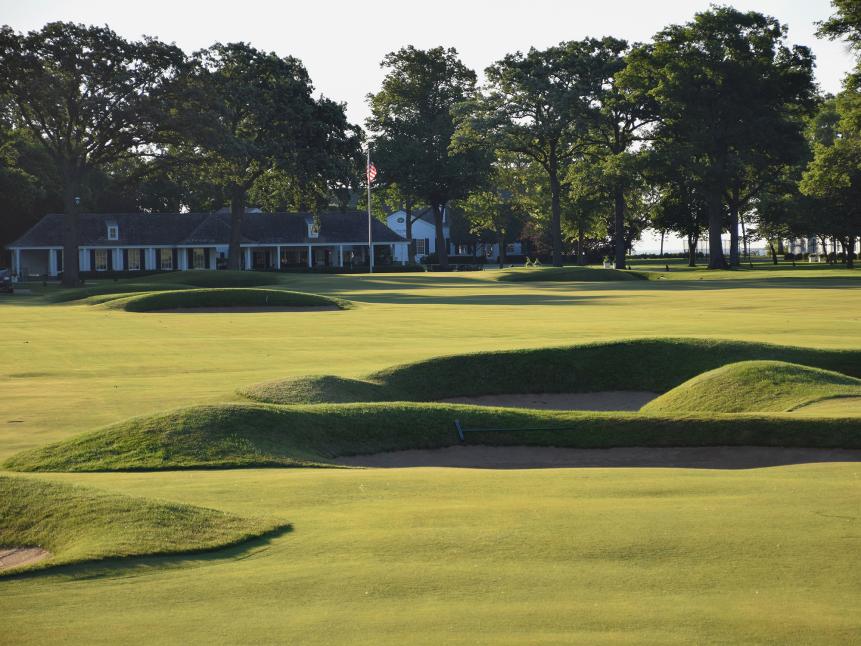
SCIOTO COUNTRY CLUB
CURRENT RANK: 60
It surprised us that Scioto only improved eight spots in our last ranking following a 2022 remodel by Andrew Green. Green erased much of the Dick Wilson architecture that had defined the course since an early 1960s modernization and returned it to a more breathable version of the 1916 Donald Ross design by lowering greens, rebuilding Ross’ bunkers and opening up the formerly tree-shrouded fairways. Perhaps the club’s old scores were inflated and thus there wasn’t much numerical room for a significant leap, but the changes merit a higher ranking. We think better scores will keep coming in, enough to bump it another five to 10 places.
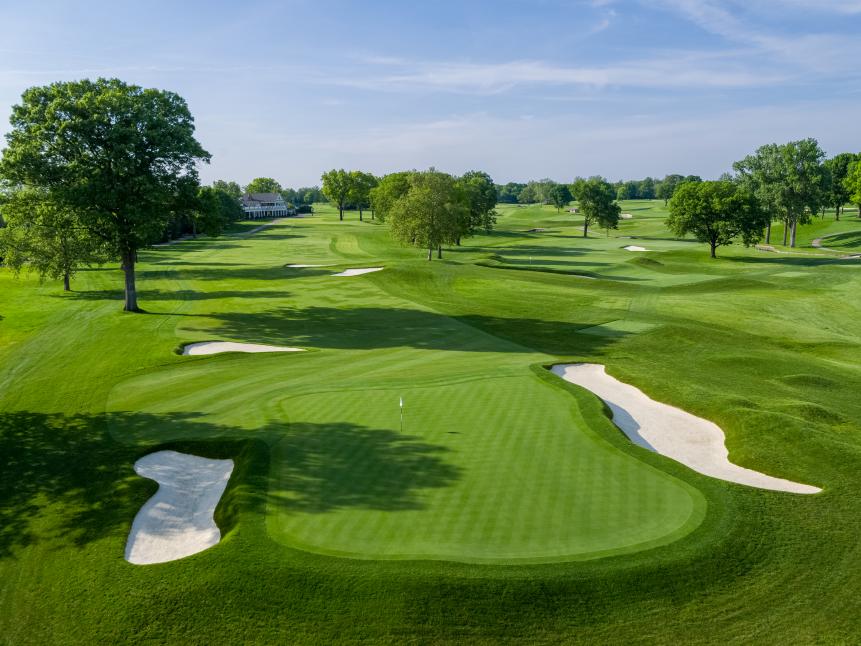
INTERLACHEN COUNTRY CLUB
CURRENT RANK: 84
Bobby Jones won the 1930 U.S. Open at Interlachen, the third leg of his historic Grand Slam. Since then, generations of tree planting turned the countryside course into an arboretum, narrowing once spacious holes and reducing the size of the greens. The club slipped from a high of 36th in 2003 to, 20 years later, a low of 84. Andrew Green used Ross’ detailed hole-by-hole blueprints as templates for a near-restoration that has broadened fairways, deepened bunkers and enlarged greens to capture numerous lost hole locations. Interlachen is just now being reassessed since reopening in August, but we project it will be a high riser when we release the next 100 Greatest, perhaps moving back inside the top 70.
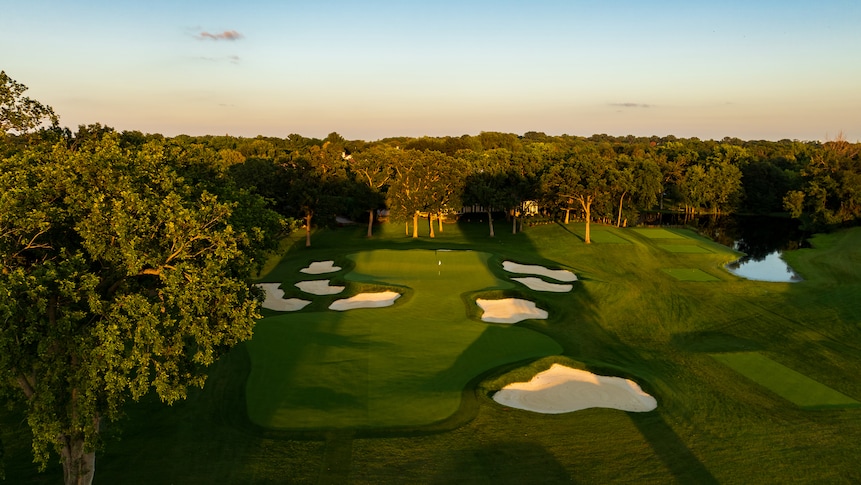
MEDINAH COUNTRY CLUB (NO. 3)
CURRENT RANK: 93
No current 100 Greatest course has undergone a more radical change than Medinah’s No. 3 course, another major championship mainstay. In 2023, Australian architects Geoff Ogilvy, Mike Cocking and Ashley Mead (OCM) swept away most of the treelined fairways and took the course back to its early prairie-style roots with a more naturalistic style of bunker, large and rolling greens and several new holes on the second nine in place of two redundant cross-lake par 3s. The change is stunning—and shocking and potentially controversial—but the new design has a chance to jolt Medinah back into relevancy (it will host the 2026 Presidents Cup). Our guess is the enthusiasm for the aesthetics and spaciousness will far outweigh any negativity, and Medinah will see one of the biggest leaps in next year’s ranking.
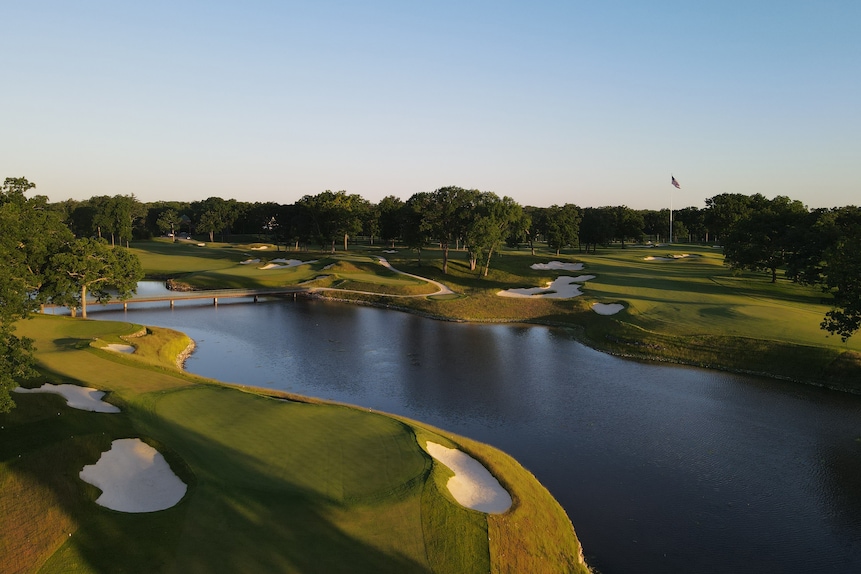
EAST LAKE GOLF CLUB
CURRENT RANK: 150
The alteration of East Lake, which Andrew Green completed in roughly nine months following the 2023 Tour Championship (a feat worthy of its own award), is not as total as the transformation of Medinah No. 3, but the impact on the way the course plays is almost as profound. Previously the tactic hitting into the sloping greens was to essentially just keep the ball below the hole to avoid treacherous downhill or big side-swinging putts. The greens have now been shifted and pushed out to new perimeters creating all kinds of left-right, front-back internal surface movements with meaningful hole locations that dare players to take on risk. Trees have come down, fairways have moved, bunkers are more apt to make you think, and it adds up to a badly needed refresh we believe could return it to the top 100 eventually.

ATLANTA COUNTRY CLUB
CURRENT RANKING: NR
Beau Welling was busy in Georgia in 2023, with renovations at Ocean Forest on Sea Island and Atlanta Country Club happening simultaneously. The projects couldn’t be more different. Ocean Forest (ranked 162) is low and coastal, while Atlanta is a grand, north Georgia suburban course built in the Augusta National model on a large site with up and down movements, precise conditioning (enhanced by the installation of hydronics tubing under the greens) and crisp-edged white sand bunkers. The biggest changes were to the par-3 third and par-5 11th, but elsewhere Welling made enhancements by moving and reshaping bunkers and tees, expanding greens and fairways and putting polish on a course that was once top 100 before falling out of our Second 100 rankings in 2023. The improvements should move Atlanta back into the top 200.
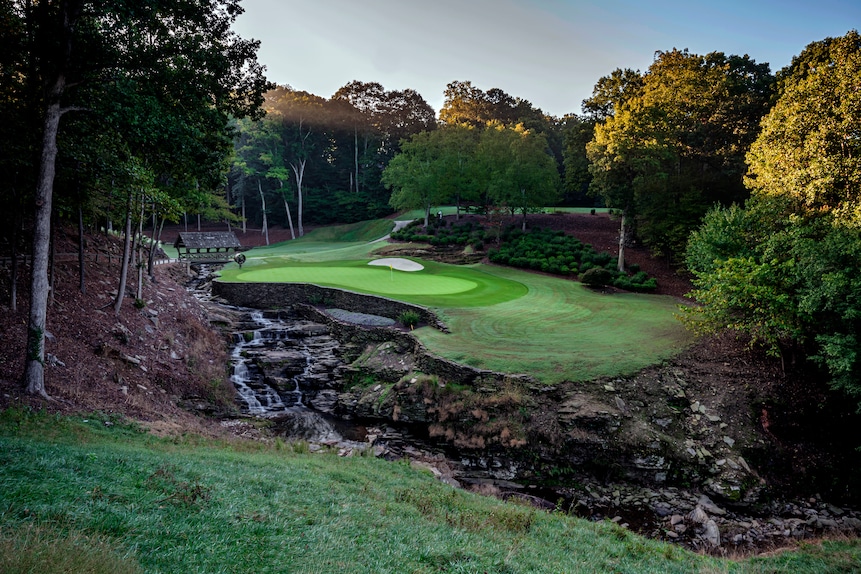
LAKE MERCED GOLF CLUB
CURRENT RANKING: NR
Winner of the 2023 Best Transformation award, Lake Merced underwent a major remodel by Gil Hanse and Jim Wagner over the winter of 2021 and 2022 that morphed the course from a cramped, San Francisco-style parkland design with tight corridors and small, protected greens into the broad-shouldered course that Alister MacKenzie and Robert Hunter left behind after their own 1928 remodel. With more open views across a lovely South San Francisco property, wide and racy fairways, MacKenzie/Hunter bunkering, several new holes and enlarged putting surfaces, the course should make major leaps in each scoring category and flash into our Second 100 Greatest ranking.

SAND VALLEY RESORT (THE LIDO)
AWAITING DEBUT RANKING
Opened in 2023, The Lido is a virtual one-to-one recreation of the course C.B. Macdonald and Seth Raynor built on the south shore of Long Island in 1917. The huge, dramatic layout was considered to be one of the best in the U.S. until it closed during World War II. Michael and Chris Keiser replicated it at their Sand Valley resort using computer models, GPS mapping and the input of Tom Doak and his associates. The size and breadth of the course is dumbfounding, unlike anything in America, and holes like Channel, the Alps, Punchbowl and Home (the 18th), have to be seen to be believed. It will not surprise us if Lido lands somewhere in the 40 to 60 range in its debut ranking.
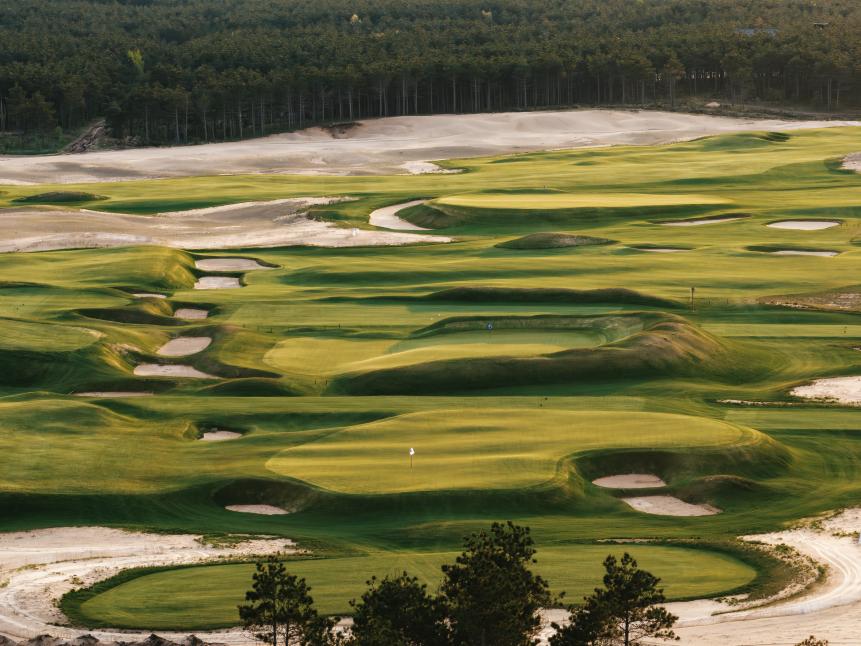
CAPROCK RANCH
AWAITING DEBUT RANKING
The debate regarding which original course designed by Gil Hanse and Jim Wagner is the best has become more argumentative the last few years. Previously it looked like Ohoopee Match Club (No. 34) was the clear choice, but CapRock Ranch in Nebraska, the 2022 Best New Private Course, and Ladera, the 2023 Best New Private Course winner just south of La Quinta, Calif., want words. CapRock wins in the visuals category with eight holes strung along the edge of a 200-foot-high canyon and the rest roaming a wild west stretch of open sand hills. We like CapRock’s chances of landing inside our America's 100 Greatest with a puncher’s chance of a ranking inside the top 75.
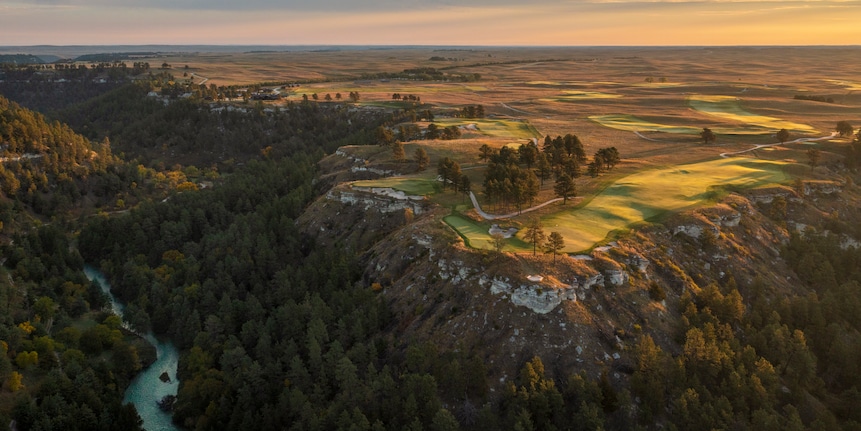
LADERA GOLF CLUB
AWAITING DEBUT RANKING
We’re as fascinated as anyone else to see whether CapRock Ranch or Ladera charts higher. CapRock is all about natural beauty, but Ladera is all about artistic intent. The canvas was an old lemon and mango grove in California’s dry, hot Coachella Valley with little to distinguish it beyond attractive mountain range views, but Hanse and Wagner engineered it into broad, rugged course that plays over, around and though a manmade network of barrancas. It’s a masterclass in variety and golf hole creation, and in many ways a more impressive accomplishment than anything else the pair have built. Look for the race between Ladera and CapRock to be neck and neck.

OTHERS TO WATCH
LANDMAND: We’d be pleased to see Landmand, the second-year public course in northeastern Nebraska from architects Rob Collins and Tad Kind, surge inside the Second 100 Greatest. It has the potential as well as the audience—tee times have been selling out as soon as they go online at the beginning of each year. Where else in the U.S. can you pay to play on greens that average around 12,000-square feet?
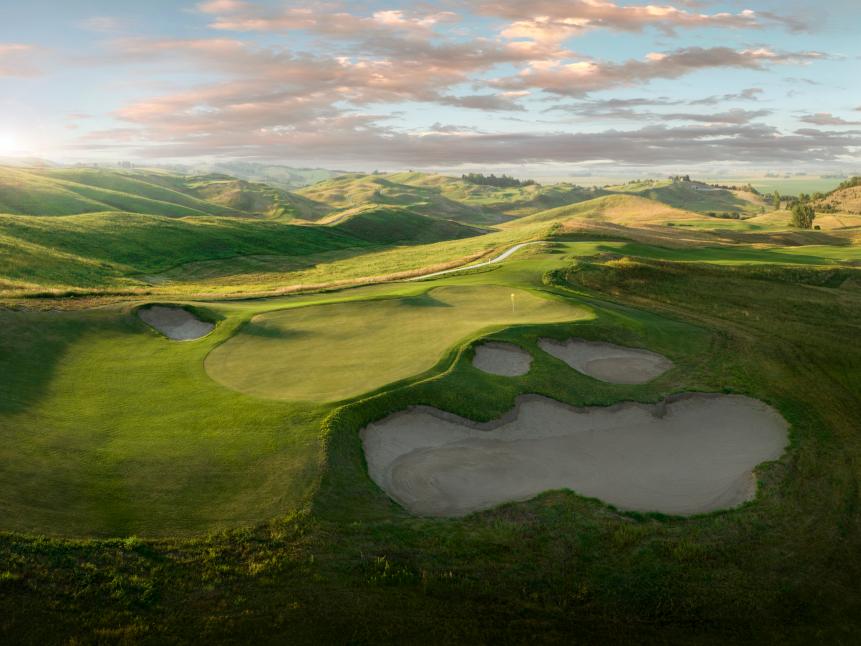
From Golf Digest Architecture Editor Derek Duncan:
Actor Nick Cage once ate a live cockroach for a film he was shooting. Later, when asked why—he could have eaten a pretend insect—he responded, “Anything less wouldn’t be real.” The conceit is that at times the only way to fulfill the potential of a given situation—a movie scene, a piece of art, a military offensive—is to push as far and aggressively as possible.
This principle applies to Landmand, a new design in northeastern Nebraska about 10 miles from Sioux City, Iowa. The course sits on a vast, elevated section of loess formations with eroded furrows and valleys. It winds across the bluffs and between valleys, and from the tops of the ridges horizon views of 20 miles or more are possible, filling the landscape with a feeling of unlimited proportion.
Given the setting, it’s impossible to discern the scale of the features in the near and middle distance, and the only way for architects Rob Collins and Tad King to make the golf look like it fit against the endless backdrops was to construct fairways 80 to 100 yards wide and greens that are, cumulatively and in some cases individually, the largest in the United States.
Explore our complete review here—including bonus photography and ratings from our expert panelists.
LOST RAIL GOLF CLUB: The state of Nebraska could realistically pop four new courses into the top 200. Lost Rail, located south of Omaha from designer Scott Hoffman, might be the best with a riveting arrangement of holes that jump and twist over a piece of land cut with ravines. This is a course that manages to bring out the best in skilled players, and higher handicaps remain engaged with one dramatic and beautiful hole after another.
 -- Photo No. 5.jpg.rend.hgtvcom.861.689.suffix/1704296299078.jpeg)
GRAYBULL: GrayBull, the new Dormie Network course in the prairie dunes outside North Platte, could be the fourth new course from Nebraska to debut in the next ranking. The design is an elegant interpretation of Sand Hills golf from Davis McLay Kidd that cuts mildly against the prevailing themes of the region while still delivering on the exotic thrill that only this part of the country can provide.

GrayBull Golf Club
Maxwell, NE
THE TREE FARM: PGA Tour pro Zac Blair’s long-awaited dream came to life when his course opened for preview play in late 2023. Routed by Tom Doak and designed by Blair and Kye Goalby, it moves elegantly through a large, impressive property of pines and ridges outside Aiken, S.C. It’s on virtually every golfer’s short list of courses they want to play, and it would not surprise us if Tree Farm debuts higher than any other new course in the ranking.

From Golf Digest Architecture Editor Derek Duncan:
At The Tree Farm, PGA Tour player and founder Zac Blair has attracted a kindred young-in-spirit if not exclusively young-in-age membership from across the country that mirrors his infectious relaxed-casual passion for walking, fast play, head-to-head matches and creative architecture, particularly from the approach shot through the green. A majority of them are good players who think nothing of hoofing 36 or more holes a day. One of the club’s mottos, is “Play Fast and Don’t Be a Dick.” Another is “Slow Players Will Be Asked to Leave the Property.”
Blair had been thinking about designing his own course for several years when he described to Golf Digest in 2017 the idea of a “different” type of club with a “small pro shop. Simple food menu. A grillroom, but no dining room. Killer practice facility. We're talking golf the way real golfers love it, a fun, relaxed place where you won't get arrested for wearing your hat indoors. It's going to happen, so stay tuned.”
Explore our complete review here—including bonus photography and ratings from our expert panelists.
OLD BARNWELL: Old Barnwell, designed by Brian Schneider and Blake Conant, and The Tree Farm will be forever linked as they were constructed almost simultaneously on nearby sites outside of Aiken, S.C. This is a taste test: Do you like Cabernet Sauvignon or Pinot Noir? We appreciate both courses and would probably go five and five if we had 10 rounds to split between them (actually we’d go 6-4 but we’re not telling which way), but our panelists will soon reveal their choice. Either way, we expect to see Old Barnwell somewhere in the Second 100 with a chance to crack the top 100.

From Golf Digest Architecture Editor Derek Duncan:
The Old Barnwell property, 12 miles southeast of Aiken, shares much in common with nearby Tree Farm. The latter is a better pure golf site, but the more enigmatic if less aesthetically endowed Old Barnwell property is profound in other architecturally advantageous ways. The course plays around and through a treeless basin at the center of the 500-acre site, shooting the occasional sortie of holes into thinned out sections of pine along a perimeter rim. The landforms surrounding the amphitheater are more nakedly muscular than what the golf tackles at The Tree Farm (where the steepest elements are bridged by cross-shot par 3s), and eight holes traverse and tumble off these fallaway ridgelines.
First-time lead architects Brian Schneider and Blake Conant used those movement to prop up wide holes that skirt the edges, and handled the less suggestive parts of the property by constructing an assortment of contemporary and antique architectural features: old bathtub bunkers recalling hazards at Garden City Golf Club and Myopia Hunt; linear shaggy-grass berms that evoke military entrenchments; open waste areas and geometric chasms of sand; and vertical grass embankments protecting bunkers and greens. On top of this are a set of putting surfaces that crash any conversation of the game’s most profoundly contoured, pushing the limits playability without crossing into needless ornamentation. Embossing a piece of art with so many inspirations can overwhelm the design’s reason for being, or worse, make it derivative. At Old Barnwell these eccentricities work because the land benefitted from them. As Conant has alluded, he and Schneider weren’t afraid to show that they built things.
Explore our complete review here—including bonus photography and ratings from our expert panelists.
WHITE BEAR YACHT CLUB: Of all the older courses hovering outside the top 200, White Bear—a wild rollercoaster of a course designed over 100 years ago by William Watson northeast of Minneapolis—could be poised to break through after the latest round of ongoing improvements by Jim Urbina. There are still a few tweaks in the works, so it’s possible WBYC will have to wait until after the 2025-2026 ranking for its big reveal.
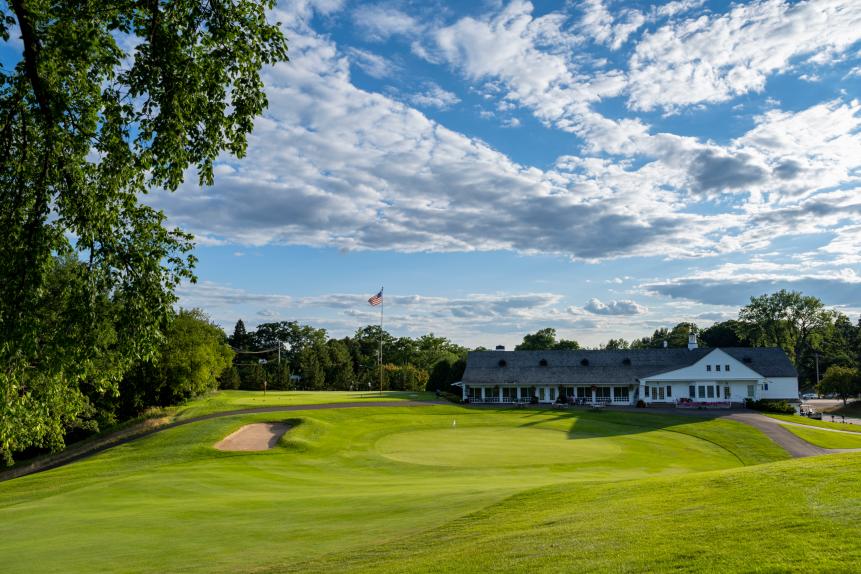
• • •
Explore Golf Digest's new Course Reviews section where you can submit a star rating and evaluation on all the courses you’ve played. We've collected tens of thousands of reviews from our course-ranking panelists to deliver a premium experience, which includes course rankings, experts' opinions, bonus course photography, videos and much more. Check it out here!










